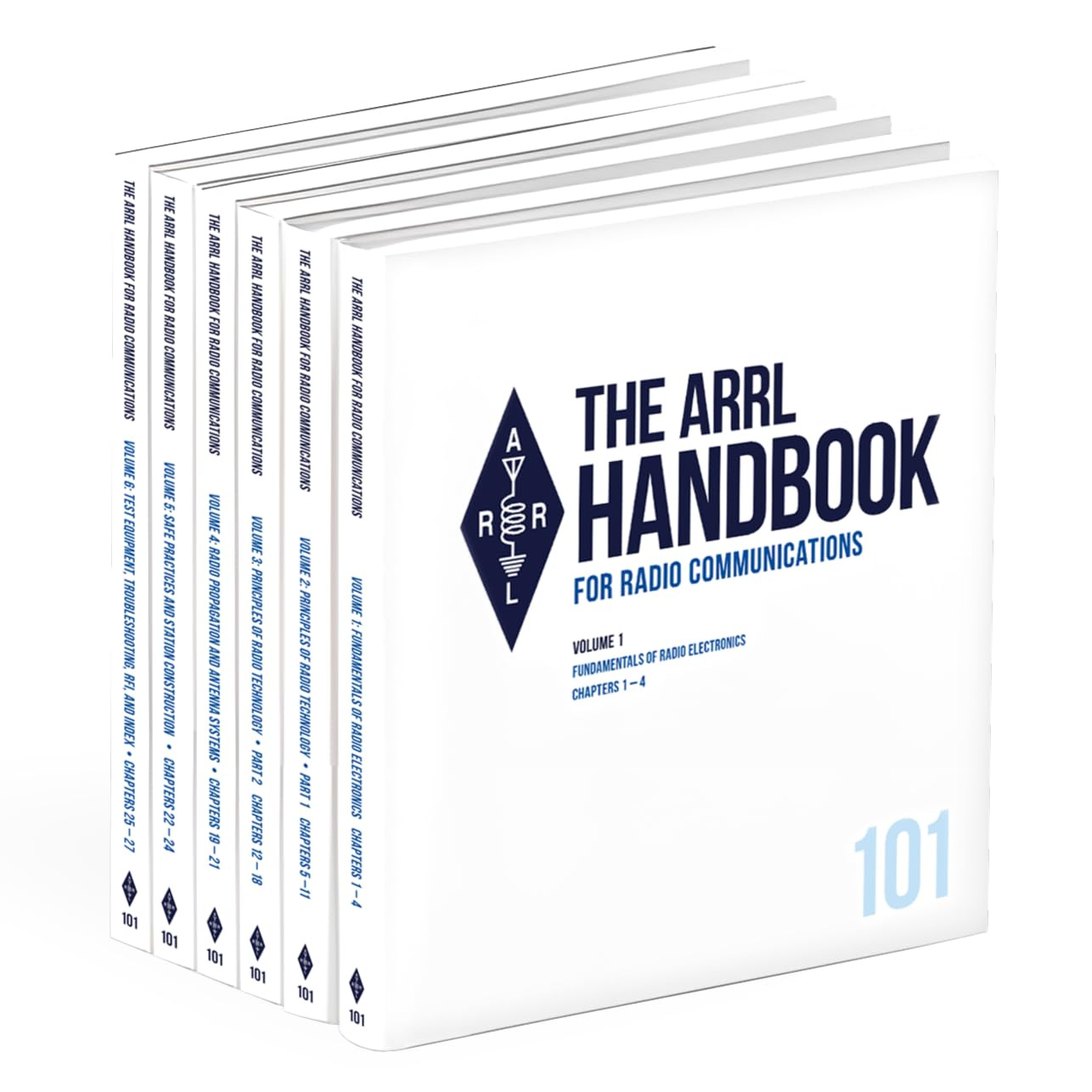Introduction
The ARRL Handbook for Radio Communications 101st Edition Six-Volume Set is an essential reference for radio enthusiasts, engineers, and hobbyists involved in RF communications. Published by the American Radio Relay League (ARRL), this edition marks an important milestone in the evolution of amateur and professional radio communications. Known for its comprehensive and authoritative coverage, this handbook is a must-have resource for those involved in electronics, RF engineering, and amateur radio operations.
This review will take an in-depth look at the content, usability, and overall value of the 101st edition of the ARRL Handbook, highlighting its significance in the ever-evolving world of radio communications.
Overview of the Six-Volume Set
The 101st edition continues the tradition of excellence, offering detailed explanations, technical insights, and practical applications of RF engineering and amateur radio operations. This edition is divided into six volumes, making it more convenient for readers to navigate specific topics without dealing with a single, cumbersome book.
Key Features:
Comprehensive RF Engineering Reference – Covers fundamental and advanced concepts in RF design and theory.
Updated and Expanded Content – Includes the latest technologies, updates on digital signal processing, SDR (Software Defined Radio), and modern communication techniques.
Practical Hands-On Projects – Offers schematics, step-by-step guides, and experimental setups for enthusiasts.
Well-Structured Multi-Volume Format – Each volume focuses on specific aspects of radio communications, allowing for easier access to relevant topics.
Authored by Experts – Contributions from experienced engineers, scientists, and amateur radio professionals ensure accuracy and depth.
Content Breakdown
Each of the six volumes provides in-depth coverage of specific areas related to RF engineering and amateur radio. Below is a breakdown of the main topics covered:
Volume 1: Fundamental Theory & Principles
Circuit analysis and electronic components
Understanding radio wave behavior and propagation models
Volume 2: Practical Design & Applications
Antenna theory and design principles
Practical aspects of circuit design
Volume 3: Digital & Software-Defined Radio (SDR)
Digital signal processing techniques
Introduction to SDR and its applications
Advanced modulation and encoding schemes
Volume 4: Equipment & Station Setup
Transmitter and receiver design
Guidelines for setting up amateur radio stations
Volume 5: Troubleshooting & Maintenance
Common RF circuit issues and diagnostics
Tools and techniques for testing and troubleshooting
Best practices for maintaining radio equipment
Volume 6: Regulatory & Operational Guidelines
FCC regulations and licensing requirements
Best practices for emergency and public service communications
Ethical considerations in amateur radio
Pros & Cons of the ARRL Handbook (101st Edition)
Pros:
Comprehensive Coverage – A well-rounded resource that covers everything from fundamental concepts to advanced applications. Convenient Multi-Volume Set – Easier to handle and reference specific topics without flipping through a massive single book. Expert Contributions – Written by industry professionals and experienced amateur radio operators. Updated for Modern Tech – Includes content on SDR, digital modes, and cutting-edge RF technologies. Practical Projects – Hands-on designs and experiments enhance learning for both beginners and seasoned professionals.
Cons:
Advanced Content – Some sections may be too technical for complete beginners without prior RF knowledge. Limited Color Illustrations – While the diagrams and schematics are detailed, more color illustrations could enhance comprehension.
Who Should Buy This Handbook?
This six-volume set is an ideal resource for a variety of users, including:
Amateur Radio Operators – Those looking to enhance their technical knowledge and station capabilities.
Electrical & RF Engineers – Professionals working in radio frequency design, communications, and electronic systems.
Students & Educators – A valuable textbook/reference for courses related to telecommunications and radio engineering.
Hobbyists & Experimenters – Individuals passionate about DIY electronics and radio communications.
Final Verdict: Is It Worth It?
The ARRL Handbook for Radio Communications 101st Edition Six-Volume Set is an indispensable reference for anyone serious about RF communications. While the cost may be a bit steep, the depth of knowledge, practical applications, and expert insights make it worth every penny. The multi-volume format enhances usability, ensuring that specific topics can be accessed quickly without navigating through an overwhelming amount of information.
For both seasoned professionals and passionate radio enthusiasts, this handbook remains the gold standard in RF engineering and amateur radio literature. If you're looking for a comprehensive, up-to-date guide on radio communications, this set is an excellent investment.





A comprehensive review. Thank you for writing and sharing it.